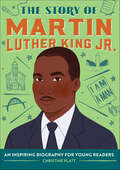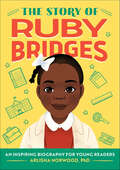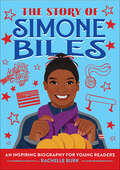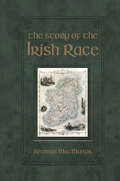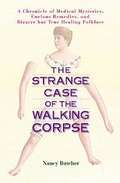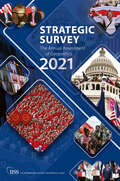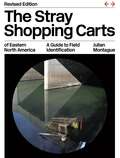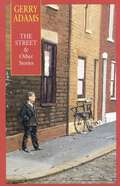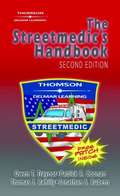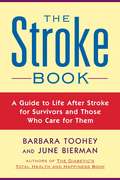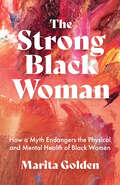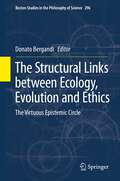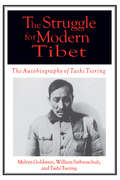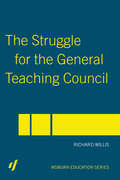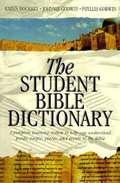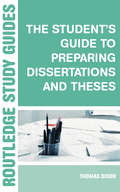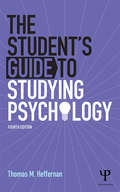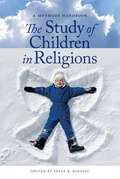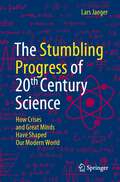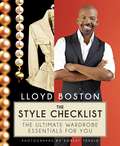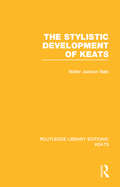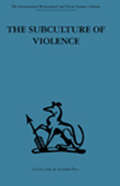- Table View
- List View
The Story of Martin Luther King Jr.: An Inspiring Biography for Young Readers (The Story Of)
by Christine PlattDiscover the life of Martin Luther King Jr.—a story about standing up for civil rights for kids ages 6 to 9Martin Luther King Jr. became one of the most important civil rights leaders in America by fighting for equality for Black people. Before he made history with his powerful speeches and peaceful protests, Martin was a dedicated, smart kid who loved to learn. He challenged racism and overcame hardships to follow his passion and do the right thing. Explore how Martin went from being a kid with a dream to an outstanding leader who made America a better place for everyone.Independent reading—This Martin Luther King Jr. biography is broken down into short chapters and simple language so kids 6 to 9 can read and learn on their own.Critical thinking—Kids will learn the Who, What, Where, When, Why, and How of Martin's life, find definitions of new words, discussion questions, and more.A lasting legacy—Find out how Martin made the world a more equal place for future generations in this African American history book for kids.How will Martin Luther King Jr.'s life inspire you?Discover activists, artists, athletes, and more from across history with the rest of The Story Of series, including famous figures like Ella Fitzgerald, Simone Biles, Sojourner Truth, Barack Obama, and John Lewis.
The Story of Philosophy
by Jeremy Stangroom James GarveyThe Story of Philosophy sees philosophy for what it is: a passionate, exhilarating quest for human understanding that cannot be reduced to dry categories or simple definitions. Accessible writing, brilliant scholarship and over 150 colour illustrations combine to form a richly informative and highly entertaining work of narrative history.Packed with intriguing anecdotes and fascinating detail, James Garvey and Jeremy Stangroom bring us face to face with the most important philosophers in western history. The story begins with the Ancient Greeks, Socrates, Plato and Aristotle, great thinkers who set the philosophical agenda to this day. It continues with Greek and Roman philosophers--slaves and emperors who found consolation in deep thoughts about life and death--and moves on to the religious thinkers of the Middle Ages. The origins of modern science, politics, and morality are examined, alongside theories of knowledge, logic, mind and matter. Along the way, you'll discover Descartes' evil demon, Locke on the limits of knowledge, Rousseau and Hobbes on human nature, Hume's scepticism, Kant on duty, Nietzsche's Superman, Marx on class struggle, Russell's logic, Wittgenstein on meaning, Sartre on bad faith, Foucault's take on power, and much more.Rigorous, refreshingly free of academic jargon, and highly accessible, this is the ideal introduction for anyone who wants to gain a new perspective on philosophy's deepest mysteries and most intriguing discoveries.
The Story of Ruby Bridges: An Inspiring Biography for Young Readers (The Story of Biographies)
by Arlisha Norwood AlstonDiscover the life of Ruby Bridges—a story about bravery and breaking down barriers for kids ages 6 to 9Ruby Bridges was the first Black student to attend an all-white public school in the southern United States. Before she helped desegregate schools and change the course of history, she was a happy girl who helped take care of her younger siblings and loved to play outside. Her life changed when she was chosen to attend William Frantz Elementary, where she became a civil rights leader at a very young age. Explore how Ruby went from being a thoughtful girl growing up in Mississippi to a national leader in the fight for equality.Independent reading—This Ruby Bridges biography is broken down into short chapters and simple language so kids 6 to 9 can read and learn on their own.Critical thinking—Kids will learn the Who, What, Where, When, Why, and How of Ruby's life, find definitions of new words, discussion questions, and more.A lasting legacy—Find out how Ruby Bridges made the world a better place for future generations, including you!How will Ruby's courage inspire you?Discover activists, artists, and athletes, and more from all across history with the rest of The Story Of series, including famous figures like: Sojourner Truth, Martin Luther King Jr., John Lewis, Jackie Robinson, and Barack Obama.
The Story of Simone Biles: An Inspiring Biography for Young Readers (The Story Of)
by Rachelle BurkDiscover the life of Simone Biles—a story about going for the gold for kids ages 6 to 9Simone Biles has been called the greatest gymnast of all time, winning five Olympic and 25 World Champion medals by age 22. Before she wowed the world with her incredible gymnastics skills, Simone was an energetic young girl who dreamed of becoming a top gymnast. She trained for hours every day and made many sacrifices to pursue her goals. Explore how Simone Biles went from being a kid growing up in Texas to an Olympic athlete who has won more gymnastics medals than anyone in history.Independent reading—This Simone Biles biography is broken down into short chapters and simple language so kids 6 to 9 can read and learn on their own.Critical thinking—Kids will learn the Who, What, Where, When, Why, and How of Simone's life, find definitions of new words, discussion questions, and more.A lasting legacy—See how Simone's accomplishments helped open doors for female athletes across the world.How will Simone's hard work and determination inspire you?Discover activists, artists, athletes, and more from all across history with the rest of The Story Of series, including famous figures like: Misty Copeland, Jackie Robinson, Michelle Obama, Barack Obama, and Maya Angelou.
The Story of the Irish Race: A Popular History Of Ireland
by Seumas MacManusThe classic popular history of Ireland—its rich past, legends, religious and political life, culture, and contributions to the wider world.In The Story of the Irish Race, popular storyteller Seumas MacManus provides a wide-ranging look at the development of Ireland and its people. Beginning with the early colonization by the Milesius of Spain, MacManus explores ancient stories about the Tuatha De Danann; Cuchullain; Fionn and the Fian; Irish invasions of Britain; St. Bridget and St. Patrick; the Vikings in Ireland; Irish missionaries and scholars abroad; and life and culture in ancient and medieval Ireland. He also investigates more recent events and names in Irish history, such as Oliver Cromwell, “The Wild Geese,” Wolfe Tone, Daniel O’Connell, the Fenians, the Famine, Charles Stewart Parnell, and the Land League. From its earliest days to the Easter Rising, MacManus provides an entertaining and enlightening look at one of the world’s most fascinating cultures.
The Strange Case of the Walking Corpse: A Chronicle of Medical Mysteries, Curious Remedies, and Bizarre but True Healing Folklore
by Nancy ButcherDid you know that bananas can cure warts; chewing on raw ginger can relieve nausea; sniffing vanilla can help suppress your appetite; or that raw potato can soothe a burn? Healing is full of curious remedies-some based on time-honored folklore, others straight from the medical journals. Nancy Butcher has gathered together some of the most unusual natural cures that have been proven effective today, and even throws in some unbelievable and-thankfully-abandoned therapies from times past. Filled with case histories of unique illnesses, historic documentation of strange medical practices, and the author's own insightful commentary, this book explains not only how to cure headaches, sleep better, and improve your sex life, but also that people with Cotard's syndrome actually believe they are dead.
The Strategic Survey 2020
by The International Institute for Strategic StudiesStrategic Survey 2020 The Annual Assessment of Geopolitics The worst pandemic in a century tested governments, strained societies and frayedinternational ties during the year to mid-2020. But there was much more to this periodthan COVID-19. Climate change – another severe global challenge – grew more critical. USPresident Donald Trump was impeached, the United Kingdom left the European Union, andIranian Quds Force commander Qasem Soleimani was killed. Strategic Survey 2020 provides a comprehensive overview of major developments in everyregion of the world, and in-depth analysis of key geopolitical and geo-economic issues: War The US–Taliban agreement to end the United States’ longest war; the persistence ofother complex armed conflicts. Power China’s growing influence, especially in Europe and the South Pacific; Turkey’s forceprojection in the Middle East and beyond; the EU’s quest for strategic autonomy; thenew geopolitics of the Red Sea; the implications of Ethiopia’s giant dam for relationsbetween Nile states; the increasing use of economic sanctions as a tool of statecraft. Rules The decline of multilateralism; prospects for arms control; key gaps in internationallaw; Central Asia’s connectivity; changes in the status of Jammu and Kashmir; duallegitimacy in Venezuela. Strategic Survey 2020 also assesses a diverse range of political leaders: Progress of three ambitious reforming presidents: Cyril Ramaphosa of South Africa,Volodymyr Zelensky of Ukraine and Andrés Manuel López Obrador of Mexico. Foreign-policy legacies of two veteran leaders: Angela Merkel and Abe Shinzo. Trump’s challenges to both the transatlantic relationship and China. Evolution of and prospects for Vladimir Putin’s presidency. Strategic Survey 2020 is the indispensable guide to the events, actors and forces that de nedan exceptionally complex year. It highlights the geopolitical issues that will shape theinternational agenda in 2021.
The Strategic Survey 2021 (Strategic Survey)
by The International Institute for Strategic StudiesStrategic Survey 2021: The Annual Assessment of Geopolitics provides objective, in-depth analysis by leading experts of the events, actors and forces driving international relations. It is the indispensable guide for policymakers, business leaders, analysts and academics who need to understand the geopolitical and geo-economic trends shaping the global agenda in 2022 and beyond. Key features · Comprehensive annual review of world affairs from the International Institute for Strategic Studies, the leading international research institute that provides objective analysis of military, geopolitical and geo-economic developments that could lead to conflict. · Covers developments in all regions as well as emerging issues and trends not yet on most radars, and analyses the major themes and forces shaping each continent. · Essays on a comprehensive range of global issues including vaccine diplomacy, digital conflict, Europe’s emerging Asia-Pacific strategies, the rise of carbon neutrality, the prospects for Iran’s nuclear programme, and the future of political Islam. · Drivers of Strategic Change for major states: Verified, comparable data on state power that provides a rich and vivid guide to forces underlying geopolitical change. · Data-rich graphics and maps that provide fresh insights into geopolitical change, and a timeline of the key events of 2020–21.
The Stray Shopping Carts of Eastern North America: A Guide to Field Identification
by Julian MontagueA taxonomy we didn’t know we needed for identifying and cataloging stray shopping carts by artist and photographer Julian Montague. Abandoned shopping carts are everywhere, and yet we know so little about them. Where do they come from? Why are they there? Their complexity and history baffle even the most careful urban explorer. Thankfully, artist Julian Montague has created a comprehensive and well-documented taxonomy with The Stray Shopping Carts of Eastern North America. Spanning thirty-three categories from damaged, fragment, and plow crush to plaza drift and bus stop discard, it is a tonic for times defined increasingly by rhetoric and media and less by the plain objects and facts of the real world. Montague’s incomparable documentation of this common feature of the urban landscape helps us see the natural and man-made worlds—and perhaps even ourselves—anew. First published in 2006 to great perplexity and acclaim alike, Montague’s book now appears in refreshed and expanded form. Told in an exceedingly dry voice, with full-color illustrations and photographs throughout, it is both rigorous and absurd, offering a strangely compelling vision of how we approach, classify, and understand the environments around us. A new afterword sheds light on the origins of the project.
The Street & Other Stories
by Gerry AdamsOne of the world's best-known political figures shares stories that reveal the humanity and indomitable spirit of ordinary people caught up in extraordinary events. The moving accounts of the fictional characters in these eighteen short stories are set against the political turmoil of Gerry Adams' native Belfast.
The Streetmedic's Handbook
by Owen Traynor Patrick Coonan Thomas Rahilly Jonathan RubensThe Streetmedic's Handbook, now in its second edition, is a concise field reference that presents essential information for pre-hospital emergencies that Paramedics and EMT's do not encounter on a daily basis. With its compact size or the new, separately sold downloadable PDA content, this resource makes an ideal companion and quick-reference tool for EMT's in the field. The Streetmedic's Handbook also lends itself well to the classroom setting for students who are studying emergency medicine. From the classroom to the field, those who use this book will appreciate the standardized, problem-oriented format that sets it apart from other quick-reference manuals.
The Stroke Book
by Barbara Toohey June BiermannAn indispensable, sensitive guide for stroke sufferers and those who care for them According to the U.S. Centers for Disease Control, an American suffers a stroke every forty-five seconds. More than 700,000 Americans each year find themselves struggling to recover from this affliction--and many hundreds of thousands more are there to help them mend. June Biermann, a stroke survivor, and her coauthor--and caregiver--Barbara Toohey, authors of the bestselling Diabetic's Total Health and Happiness Book, offer this essential source for those recovering from a stroke and those providing them with support. The Stroke Book offers readers: - Clear explanations of the science of this often misunderstood condition - Information on what to expect at the hospital and in rehabilitation - Analyses of encouraging new developments in stroke therapy, including basic and alternative therapies, and traditional and cutting-edge medications - Advice on coping with complex rehabilitation needs, including adjustments for nutrition, mobility, and everyday living, and on understanding after-stroke emotional and cognitive changes - Suggestions for preventing future strokes - Information on how people recovering from a stroke can reclaim their independence and quality of life--and how caregivers can manage their own stresses and sorrows - Heartening words on keeping hope alive with patience and fortitude, and the curative power of humor - Inspiring stories of the stroke and recovery experiences of well-known individuals With stroke now the leading cause of serious, long-term disability in the United States, Biermann and Toohey's optimistic, user-friendly guide to living well after an attack is a vital tool for recovery.
The Strong Black Woman: How a Myth Endangers the Physical and Mental Health of Black Women
by Marita GoldenMajor Health Crisis Among Black Women Generated from Systemic Racism “Marita Golden’s The Strong Black Woman busts the myth that Black women are fierce and resilient by letting the reader in under the mask that proclaims ‘Black don’t crack.’” ―Karen Arrington, coach, mentor, philanthropist, and author of NAACP Image Award-winning Your Next Level LifeSarton Women’s Book Award#1 New Release in ReferenceMeet Black women who have learned through hard lessons the importance of self-care and how to break through the cultural and family resistance to seeking therapy and professional mental health care.The Strong Black Woman Syndrome. For generations, in response to systemic racism, Black women and African American culture created the persona of the Strong Black Woman, a woman who, motivated by service and sacrifice, handles, manages, and overcomes any problem, any obstacle. The syndrome calls on Black women to be the problem-solvers and chief caretakers for everyone in their lives―never buckling, never feeling vulnerable, and never bothering with their pain.Hidden mental health crisis of anxiety and depression. To be a Black woman in America is to know you cannot protect your children or guarantee their safety, your value is consistently questioned, and even being “twice as good” is often not good enough. Consequently, Black women disproportionately experience anxiety and depression. Studies now conclusively connect racism and mental health―and physical health.Take care of your emotional health. You deserve to be emotionally healthy for yourself and those you love. More and more young Black women are re-examining the Strong Black Woman syndrome and engaging in self-care practices that change their lives.Hear stories of Black women who:Asked for helpBuilt lives that offer healingLearned to accept healingIf you have read The Unapologetic Guide to Black Mental Health, The Racial Healing Handbook, or Black Fatigue, The Strong Black Woman is your next read.
The Structural Links between Ecology, Evolution and Ethics
by Donato BergandiEvolutionary biology, ecology and ethics: at first glance, three different objects of research, three different worldviews and three different scientific communities. In reality, there are both structural and historical links between these disciplines. First, some topics are obviously common across the board. Second, the emerging need for environmental policy management has gradually but radically changed the relationship between these disciplines. Over the last decades in particular, there has emerged a need for an interconnecting meta-paradigm that integrates more strictly evolutionary studies, biodiversity studies and the ethical frameworks that are most appropriate for allowing a lasting co-evolution between natural and social systems. Today such a need is more than a mere luxury, it is an epistemological and practical necessity.
The Structuring of Pedagogic Discourse
by Basil BernsteinThis book represents part of an ongoing effort to understand the rules, practices, agencies and agents which shape and change the social construction of pedagogic discourse. It draws together and re-examines the findings of the author's earlier work.
The Struggle for Modern Tibet: The Autobiography of Tashi Tsering (Mellen Studies In Education Ser. #Vol. 88)
by Melvyn C. Goldstein William R Siebenschuh Tashi TseringThis captivating autobiography by a Tibetan educator and former political prisoner is full of twists and turns. Born in 1929 in a Tibetan village, Tsering developed a strong dislike of his country's theocratic ruling elite. As a 13-year-old member of the Dalai Lama's personal dance troupe, he was frequently whipped or beaten by teachers for minor infractions. A heterosexual, he escaped by becoming a drombo, or homosexual passive partner and sex-toy, for a well-connected monk. After studying at the University of Washington, he returned to Chinese-occupied Tibet in 1964, convinced that Tibet could become a modernized society based on socialist, egalitarian principles only through cooperation with the Chinese. Denounced as a 'counterrevolutionary' during Mao's Cultural Revolution, he was arrested in 1967 and spent six years in prison or doing forced labor in China. Officially exonerated in 1978, Tsering became a professor of English at Tibet University in Lhasa. He now raises funds to build schools in Tibet's villages, emphasizing Tibetan language and culture.
The Struggle for the General Teaching Council (Woburn Education Ser.)
by Richard WillisThis book chronicles the history of the struggle to promote a self-governing body for the teaching profession from its early problems at the start of the twentieth century right through to the establishment of the General Teaching Council of England in 2000. It also explores the interest groups and policy makers who impeded its achievement and the attitude of teacher unions and the teachers themselves to the establishment of such a body.The book will be of interest to academics, researchers and historians, as well as postgraduate students.
The Student Bible Dictionary: A Complete Learning System to Help You Understand Words, People, Places, and Events of the Bible
by Karen Dockrey Johnnie Godwin Phyllis GodwinHere's a concise, easy-to-use reference book for students of all ages who seek to learn more about the Bible and its times. The Student Bible Dictionary features definitions and explanations of hundreds of Bible words, names, places, and concepts. Special color coding, meanwhile, adds special emphasis to important topics which feature additional information geared toward the student reader. From AARON to ZIPPORAH, the Student Bible Dictionary is a whole library of accessible, useful information!
The Student's Guide to Preparing Dissertations and Theses
by Phil Race Brian AllisonWhen writing a dissertation or thesis, it is essential to produce a work that is well-structured and well-presented. Giving clear examples throughout, this book offers all the practical advice that students will need, when writing a dissertation or thesis. Part 1: Content - from the layout order of contents to the compilation of the bibliography and appendices Part 2: Presentation and Style - the details of how work should be presented and covering aspects such as writing styles, page numbers, margins and abbreviations. The first edition of this book contributed to improving countless dissertations and this new edition will continue to do the same - using the practical advice and guidance it offers could mean the difference between success and failure.
The Student's Guide to Studying Psychology
by Thomas M HeffernanStudying a degree course in psychology, even if you’ve taken the subject before university, requires a whole range of new skills and knowledge. And the 4th edition of this best-selling guide is an invaluable companion. It can not only help you to get a good final degree, but will also support you in making informed choices towards either a career or further study. Updated to include the latest developments in the field, the new edition provides practical and helpful guidance on everything a psychology student encounters throughout their degree, including: Writing essays and research reports, including how to get your referencing right. Guidelines for researching ethically using humans or animals An overview of research methods and statistics, including qualitative methods Tips on how to approach and pass your exams Advice on becoming a graduate, including preparing your CV and making the most of your degree Featuring advice to help you every step of the way, the book also includes a library of weblinks to provide further resources to support your studies. This is an essential book for any psychology student wishing to make the most of their degree course.
The Study of Children in Religions: A Methods Handbook
by Susan B. RidgelyResearch in religious studies has traditionally focused on adult subjects since working with children presents significantly more challenges to the researcher, such as getting the research protocol passed by the Internal Review Board, obtaining permission from parents and schools, and figuring out how to make sense of young worldviews. The Study of Children in Religions provides scholars with a comprehensive source to assist them in addressing many of the issues that often stop researchers from pursuing projects involving children. This handbook offers a broad range of methodological and conceptual models for scholars interested in conducting work with children. It not only illuminates some of the legal and ethical issues involved in working with youth and provides guidance in getting IRB approval, but also presents specific case studies from scholars who have engaged in child-centered research and here offer the fruits of their experience. Cases include those that use interviews and drawings to work with children in contemporary settings, as well as more historically focused endeavors to use material culture—such as Sunday school projects or religious board games—to study children’s religious lives in past eras. The Study of Children in Religions offers concrete help to those who wish to conduct research on children and religion but are unsure of how to get started or how to frame their research.
The Stumbling Progress of 20th Century Science: How Crises and Great Minds Have Shaped Our Modern World
by Lars JaegerThe 70 years from 1880 to 1950 witnessed the final ascent of humankind into the modern age. Historically, this period is characterized by deep political, social and economic crises. However, parallel to this and much less known in the public, rational scientific thinking also experienced the darkest and deepest crisis of its own history. All the great modern scientific discoveries like quantum theory, genetics and neurology are products of this. Ground-breaking discoveries, profound crises, revolutionary thoughts, refutation of previously unshakable beliefs - these years are marked by scientific achievements of numerous great minds, who overturned our understanding of the world, of space, time and infinity, of life, logic and calculability almost overnight. The "intuitive genius" of these pioneers still forms the foundation of today’s scientific thinking and technological progress. In fact, tackling and overcoming those deep scientific crises shaped our modern life like nothing else. The resulting reorientation of our understanding of nature and ourselves allowed ancient philosophical questions to appear in a new light: "What is reality?", "What can we know about the world?" or "What is man's place in nature?". The most exciting period in the history of science is retold here in an entertaining way.
The Style Checklist
by Lloyd BostonThe good news is: the most stylish clothes you can have are probably already in your closet. But savvy women are on a perpetual quest to find the perfect addition to their wardrobe: the perfect bathing suit, a traffic-stopping pair of jeans, that classic little black dress. While the editorial pages of high fashion magazines can offer inspiration, they can't help you find what works for your looks and lifestyle. But Lloyd Boston's The Style Checklist offers basic guidance to help make your everyday commute your runway. With solutions to common fashion problems and a lot of how-to advice, this book simplifies and demystifies how to achieve style.
The Stylistic Development of Keats (Routledge Library Editions: Keats)
by Walter Jackson BateThis study, first published in 1945, gives a precise description of the unfolding of a great poet’s craftsmanship and suggests alignments of the technical progression with the changes of the mind. Metrical analysis is given in order to throw light on Keats’ general stylistic development using the simplest terminology and in a traditional manner. Earlier English prosodic writings are referred to throughout in order to place the style and development in the context of the period. Arranged chronologically, each chapter looks at a particular work or group of works drawing together evidence about Keats’ poetic direction. This classic work from a well-known Keats scholar is an important enlightening contribution within the extensive study of Keats’ poetry and letters.
The Subculture of Violence: Towards an Integrated Theory in Criminology
by Marvin E. Wolfgang Franco FerracutiTavistock Press was established as a co-operative venture between the Tavistock Institute and Routledge & Kegan Paul (RKP) in the 1950s to produce a series of major contributions across the social sciences. This volume is part of a 2001 reissue of a selection of those important works which have since gone out of print, or are difficult to locate. Published by Routledge, 112 volumes in total are being brought together under the name The International Behavioural and Social Sciences Library: Classics from the Tavistock Press. Reproduced here in facsimile, this volume was originally published in 1967 and is available individually. The collection is also available in a number of themed mini-sets of between 5 and 13 volumes, or as a complete collection.
